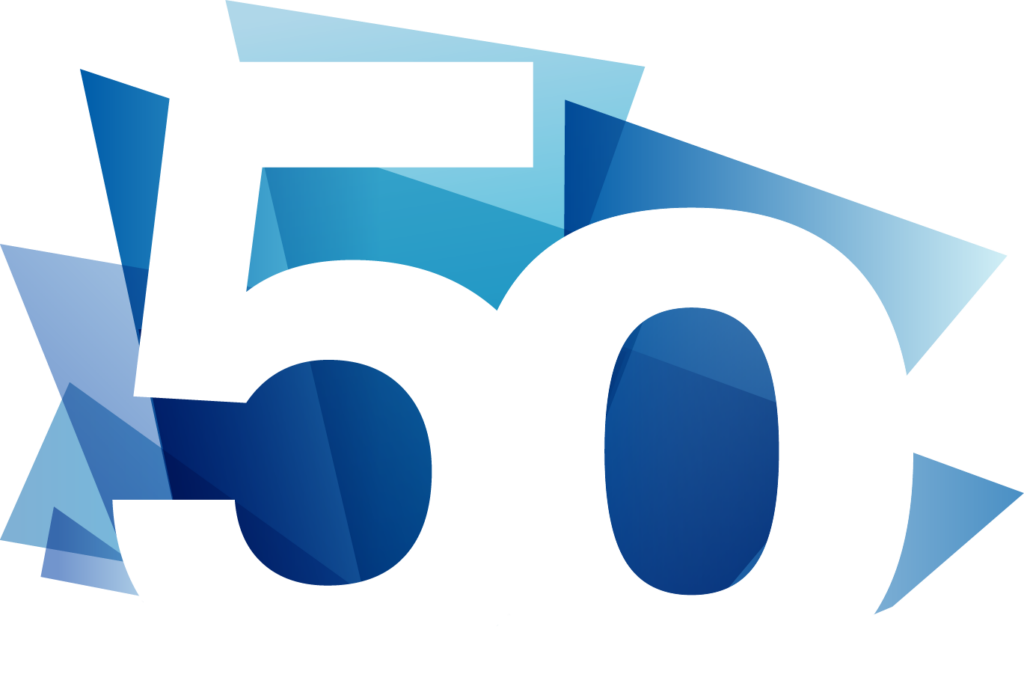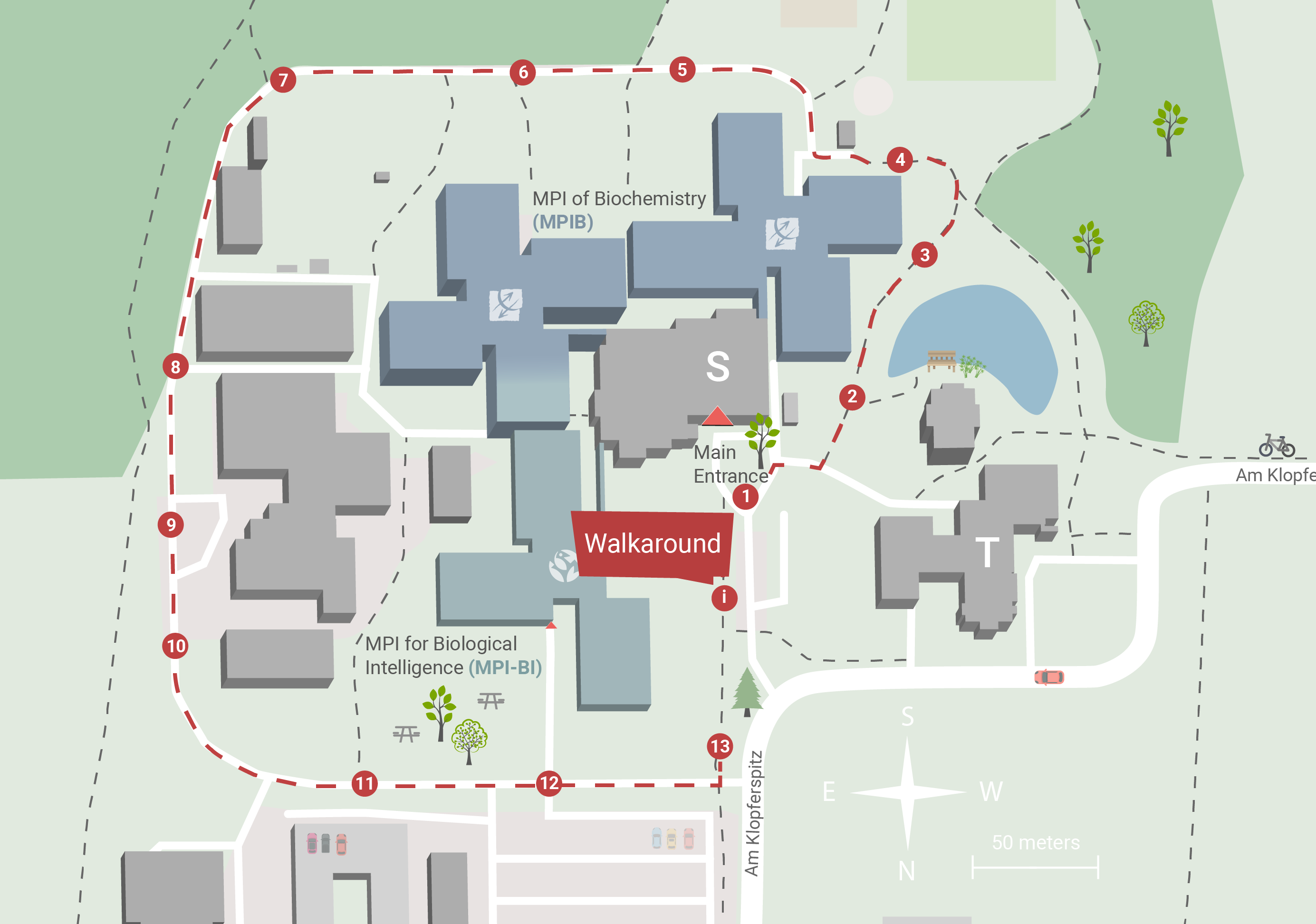
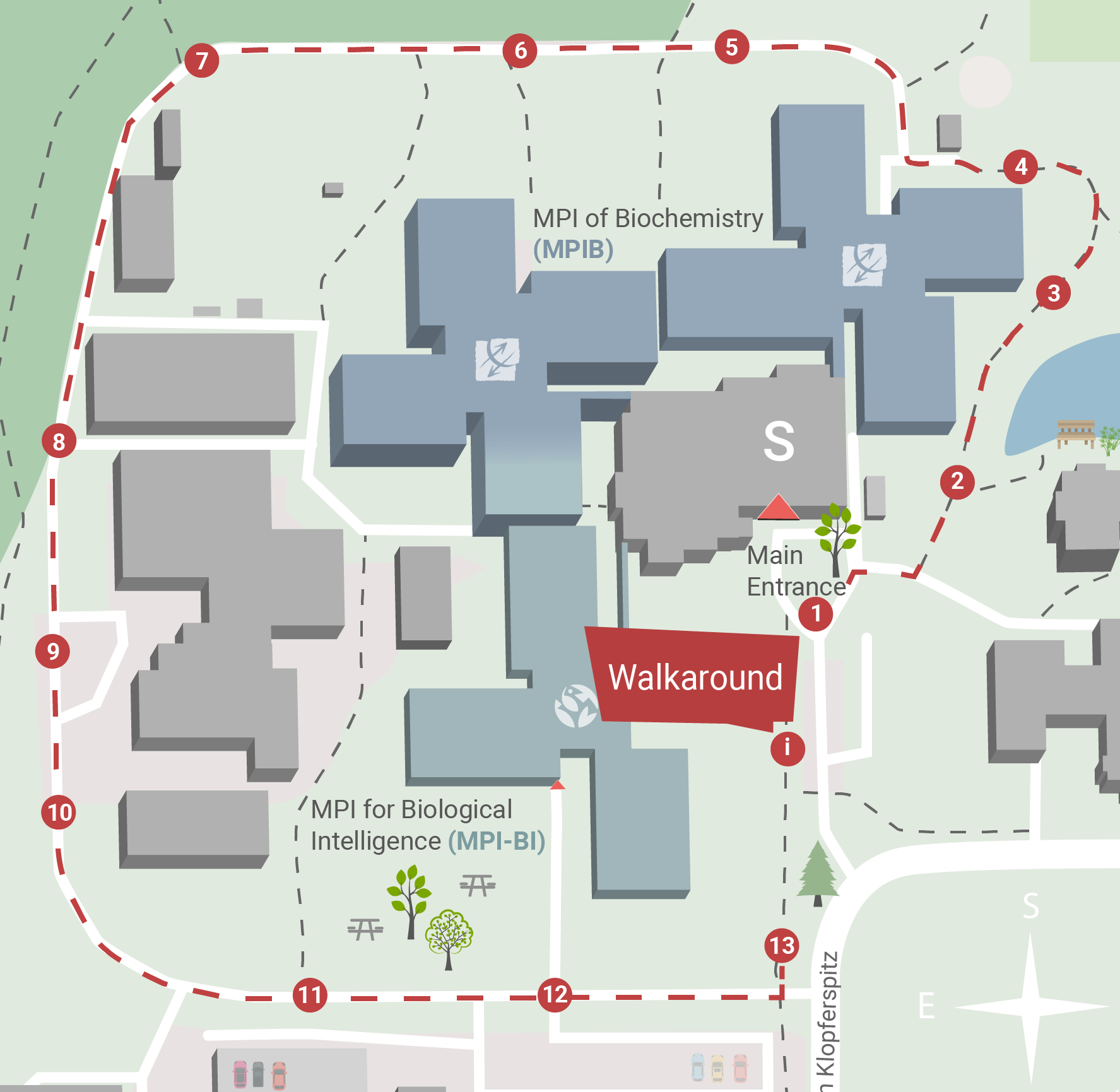
Tour around the institutes
TOUR AROUND THE INSTITUTES
Welcome to the institute grounds of the two Max Planck Institutes (MPI) in Martinsried: The MPI of Biochemistry and the MPI for Biological Intelligence. We cordially invite you to take a tour. Follow the informa- tion boards around our research buildings and learn more about us.
Welcome to the institute grounds of the two Max Planck Institutes (MPI) in Martinsried: The MPI of Biochemistry and the MPI for Biological Intelligence. We cordially invite you to take a tour. Follow the informa- tion boards around our research buildings and learn more about us.
So let‘s start!
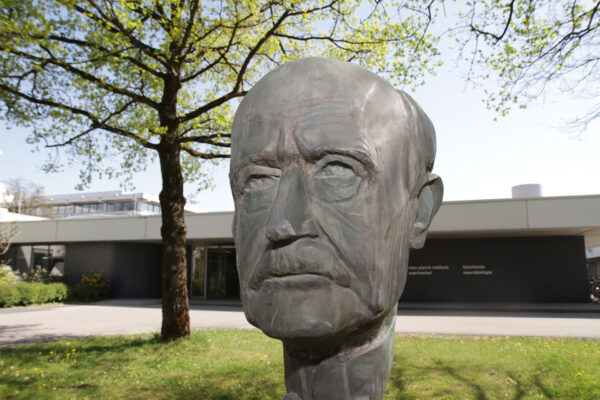
Have you discovered Max Planck yet?
No? Then continue towards the main entrance! Our next information board is located a few meters next to him.
1
The Institutes
1
The Institutes
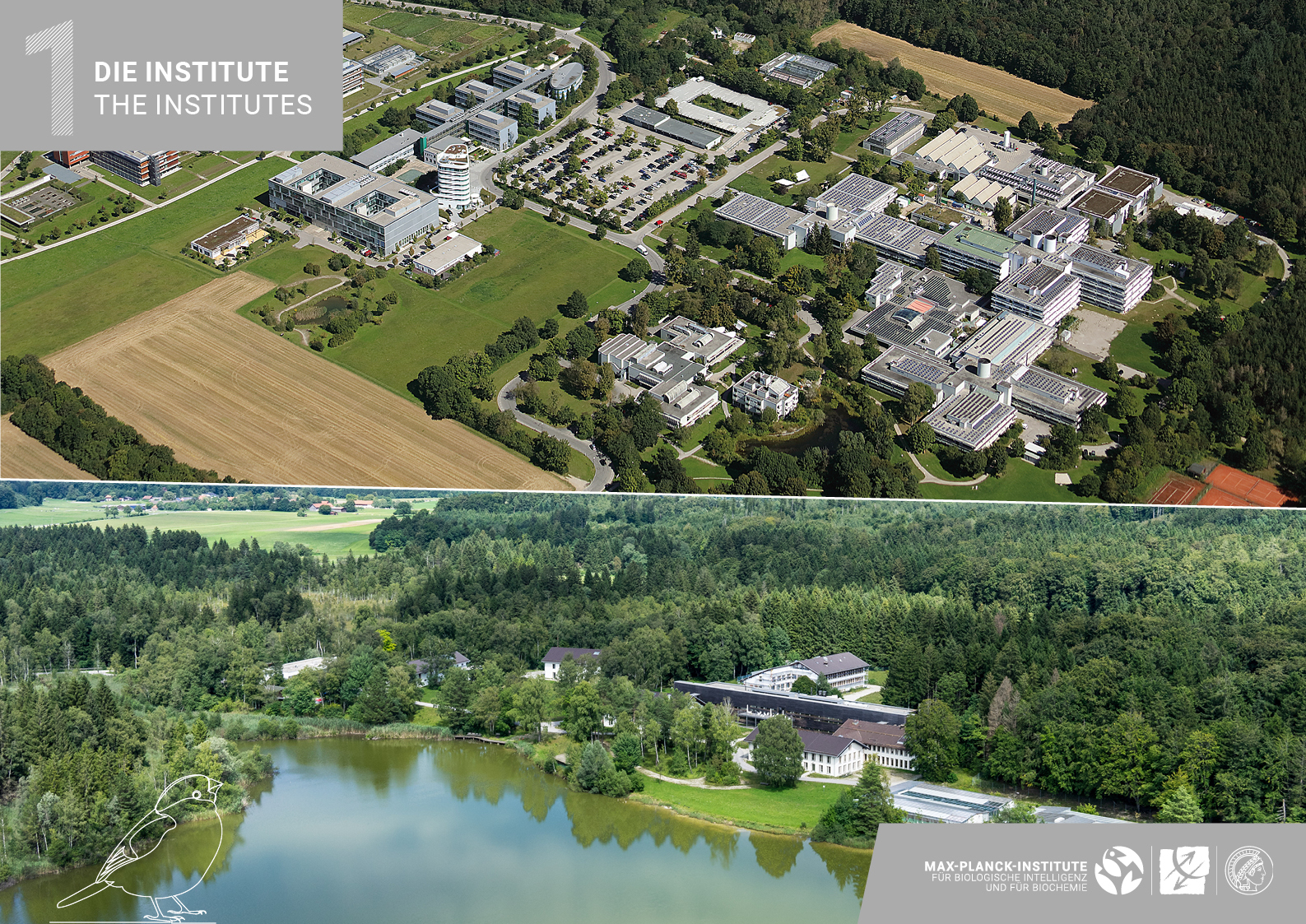
MAX PLANCK INSTITUTE OF BIOCHEMISTRY
Proteins are the cell’s molecular building blocks and machines, and are involved in virtually all life processes. At the Max Planck Institute of Biochemistry, we study the structure and function of these proteins – from single molecules to the protein composition of cells and complex organisms.
MAX PLANCK INSTITUTE FOR BIOLOGICAL INTELLIGENCE
At the Max Planck Institute for Biological Intelligence, we want to find out how animals acquire, store, apply and pass on knowledge about their environment to find new solutions to problems and adapt to their environment. The institute has two locations: Martinsried and Seewiesen near Starnberg.
2
SCIENCE WITHOUT BORDERS
2
2
Weltoffene Wissenschaft
Science without borders
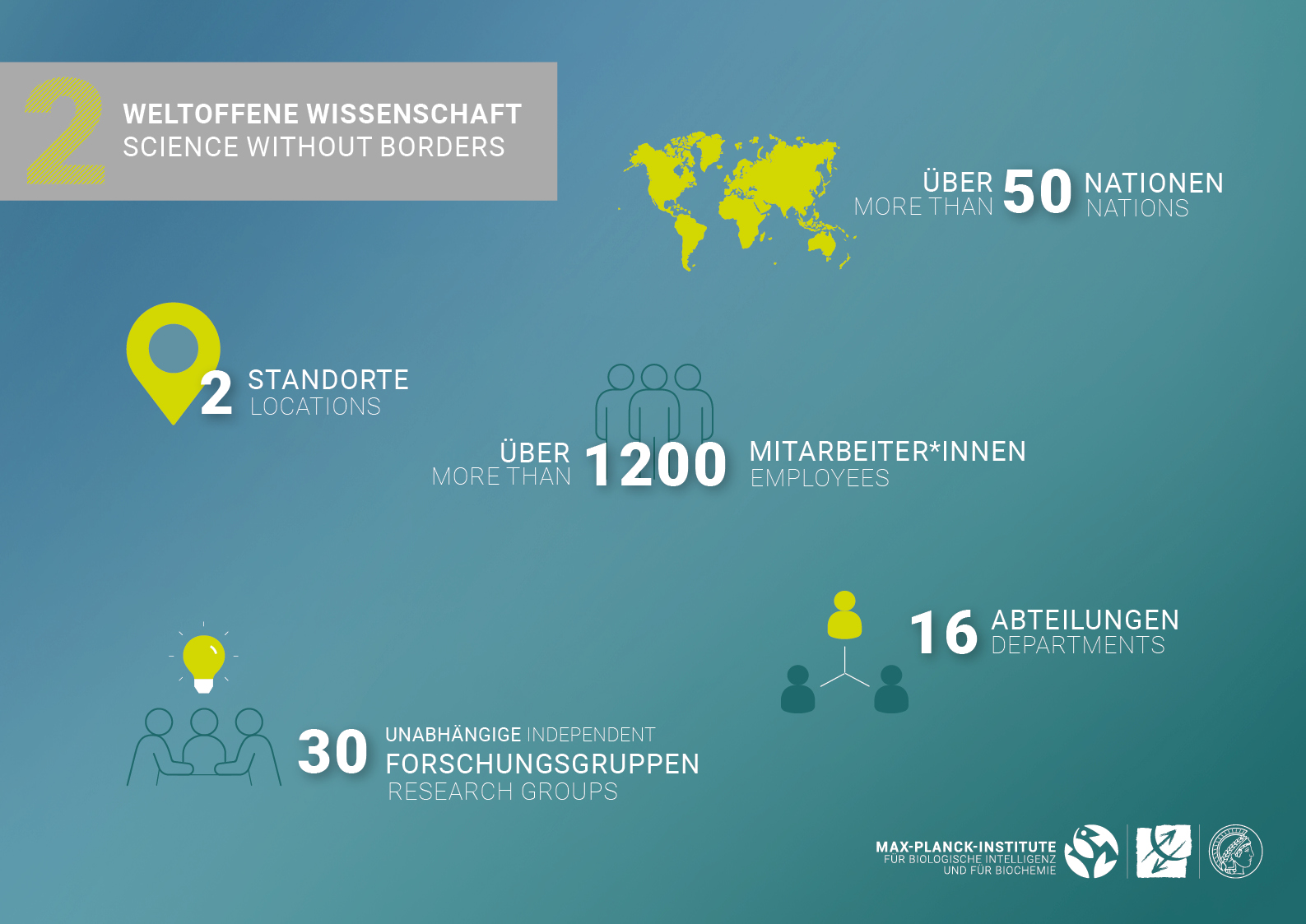
The guest house in front of you symbolizes international ex- change and networking. Our departments, research groups, and graduate schools attract outstanding scientists from all over the world every year. International collaborations and projects span a life sciences network extending beyond Martinsried. This cross-border, interdisciplinary exchange is an essential cornerstone of our innovative research.
3
WHAT
INSPIRES US
3
3
Was uns begeistert
What inspires us
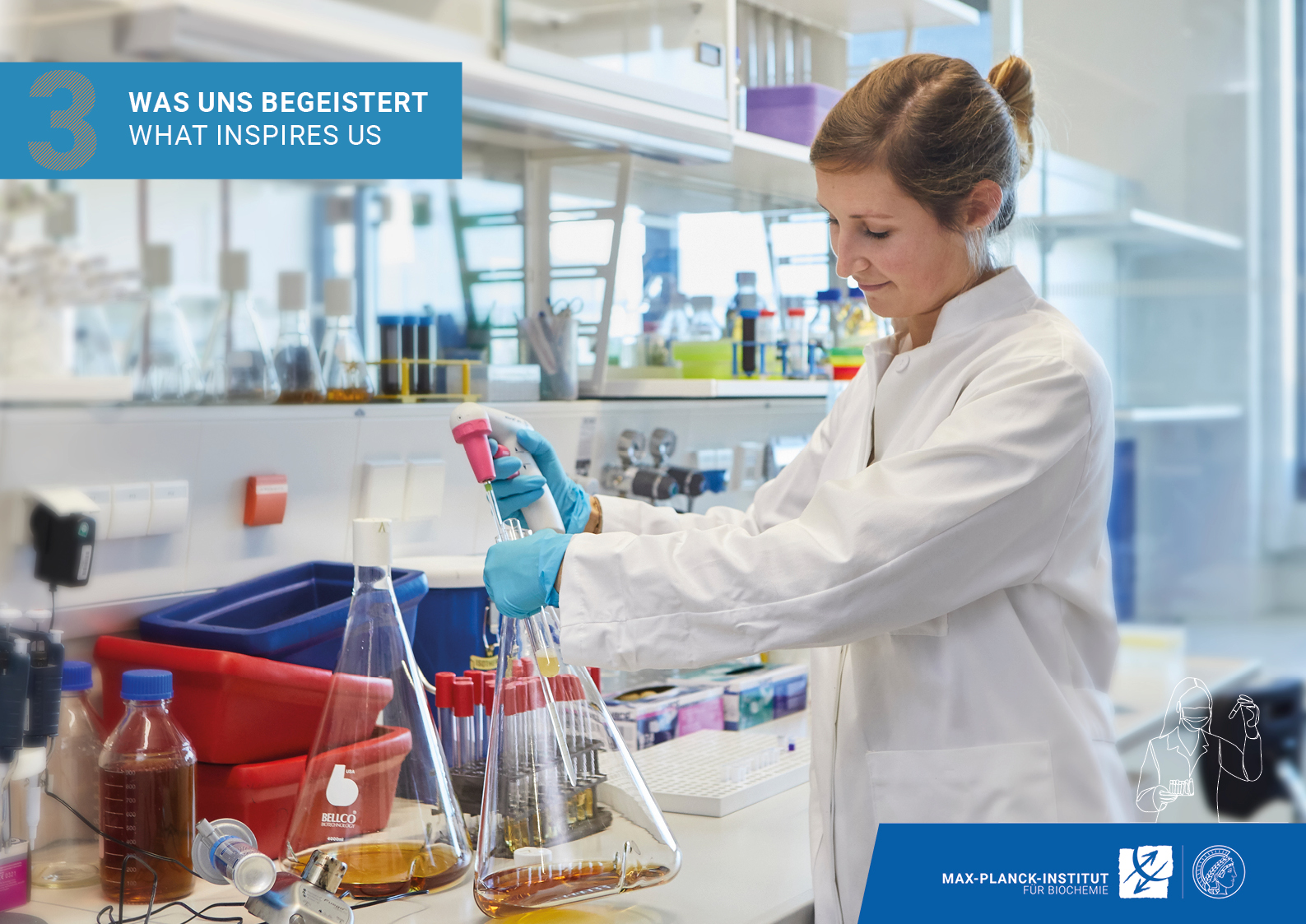
Here you can catch a glimpse in our labs. We use the latest biochemical, genetic engineering, and imaging techniques to understand the world of proteins. We study how these proteins are constructed, their intrinsic properties, and functions performed inside the cell. All metabolic pro- cesses depend on proteins – in humans, animals, plants, and bacteria. The world of proteins is endless; diseases can arise if they do not function properly. The better we understand proteins, the closer we come to understanding life itself.
4
HOW IT ALL BEGAN
4
4
Wie alles begann
How it all began
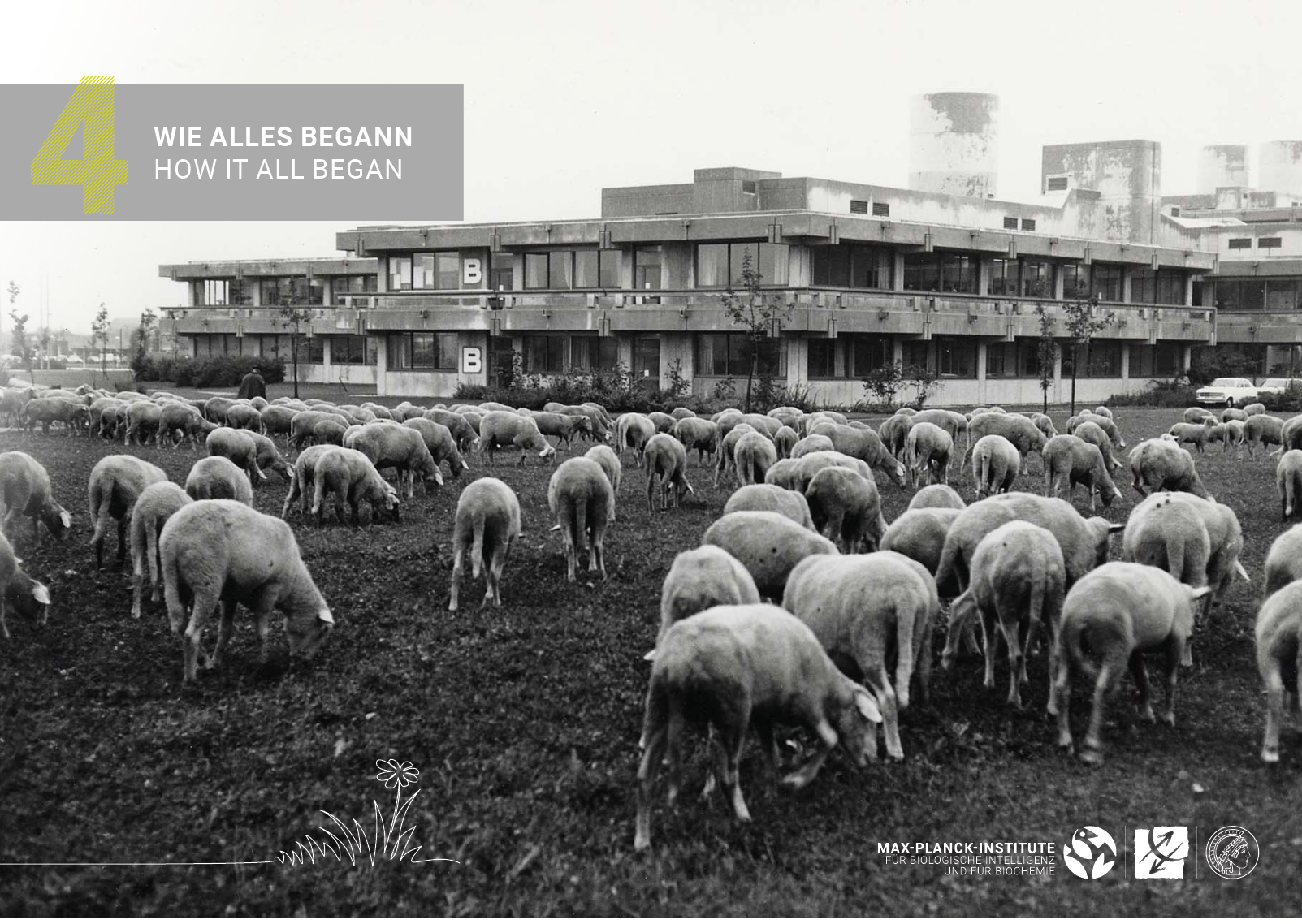
The sports field in front of you symbolizes the meadows and fields that characterized the current institute site in the 1960s. With the help of the municipality of Planegg, the Max Planck Society found a suitable building site that offered space for future expansion. Thus, in 1973, the MPI of Biochemistry opened its doors as the first research institute on campus, in the direct neighborhood of the then 500-people village of Martinsried. In 1984, the second Max Planck Institute moved to the campus. Today, the former meadow used by the local shepherd is known worldwide as Campus Martinsried for its cutting-edge research in the life sciences.
5
ARCHITECTURE
5
5
Architektur
Architecture
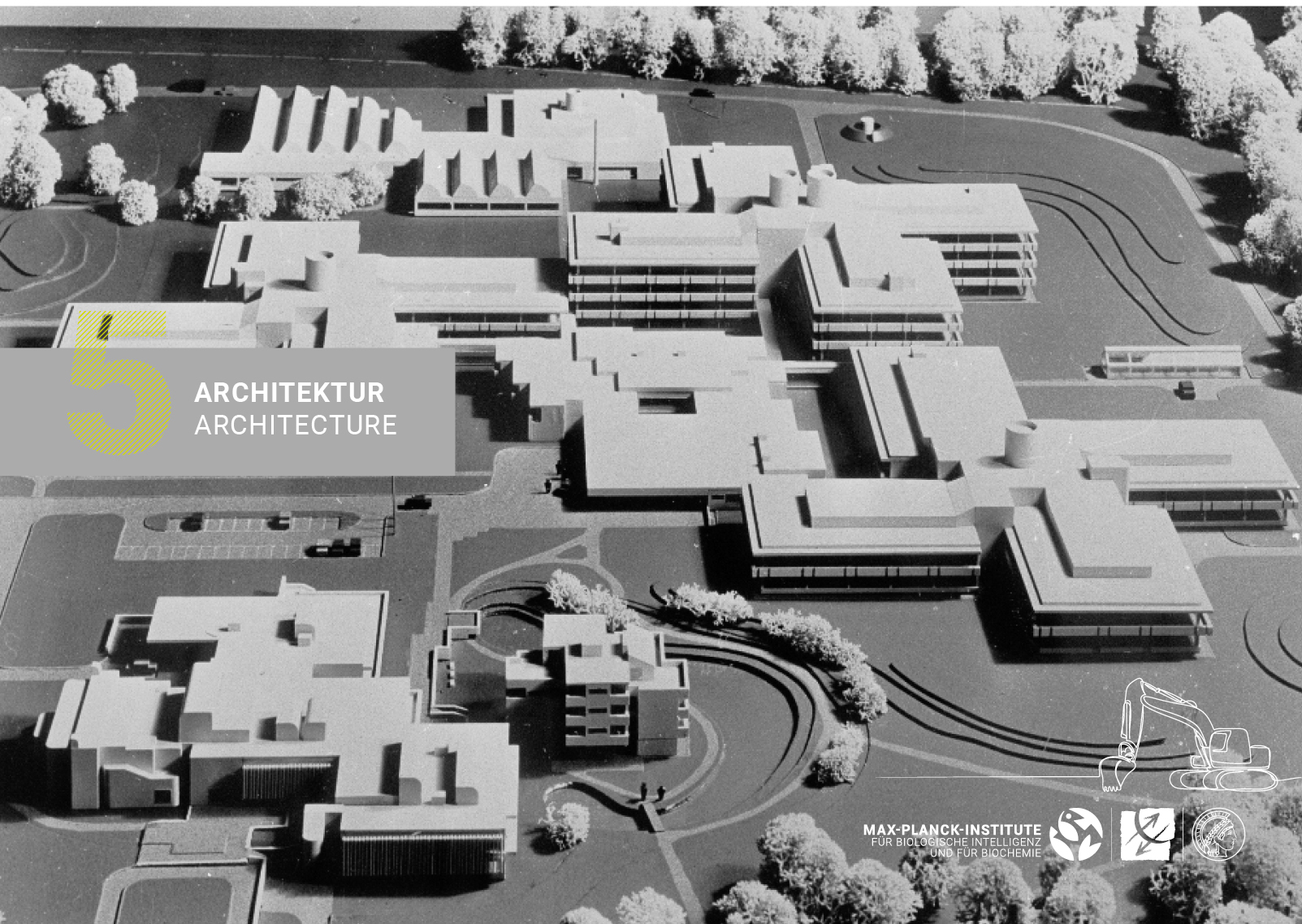
Our first institute was planned in the style of “Brutalism“ and reflects the prominent style of the 1960s. This term is derived from the French “béton brut“and means “raw concrete“. At the end of 1966, the Max Planck Society decided to hold an architectural competition with international participation. A total of 14 proposals were sub- mitted and presented in the plenary hall of the Bavarian Academy of Sciences in the Munich Residence. The jury chose the concept of the Frankfurt architect’s office Beckert and Becker. The extension for the second institute was also built in 1981 in the same style.
6
TECHNOLOGICAL PROGRESS
6
6
Technologischer Fortschritt
Technological Progress
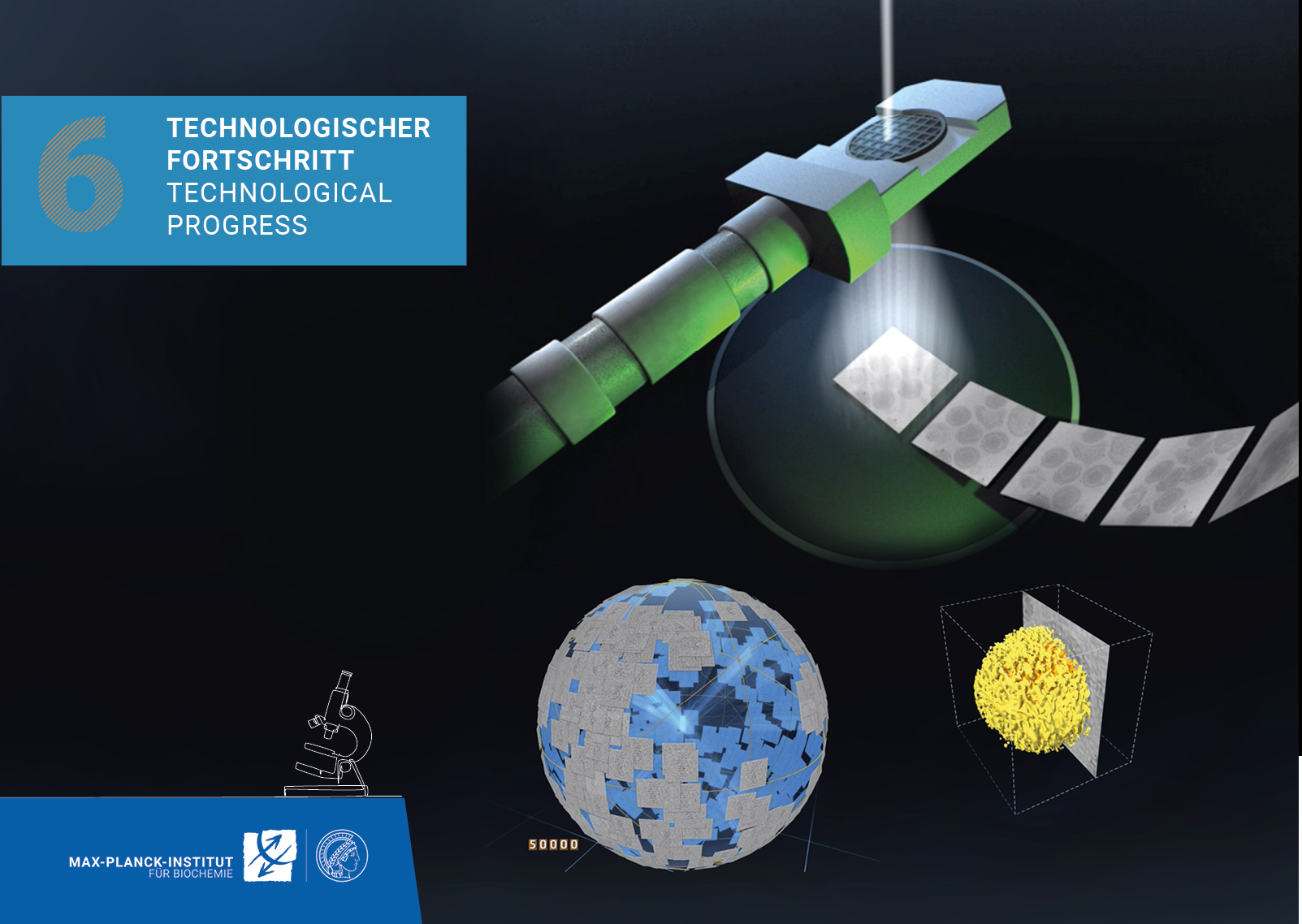
Developing new technologies propels insightful discoveries. Cryo- electron tomography is one such discovery and was developed here in the Department of Molecular Structural Biology. Using this imaging technique, we can observe, and 3-dimensionally visualize the tiny structures in cells. Although we perform research on the smallest components of biology, the instruments in use are often very large. But see for yourself by scanning the QR code. You will also find an animation that shows how cryo-electron tomography works.
7
SUSTAINABILITY AT OUR INSTITUTES
7
7
Nachhaltigkeit an den Instituten
Sustainability at our institutes
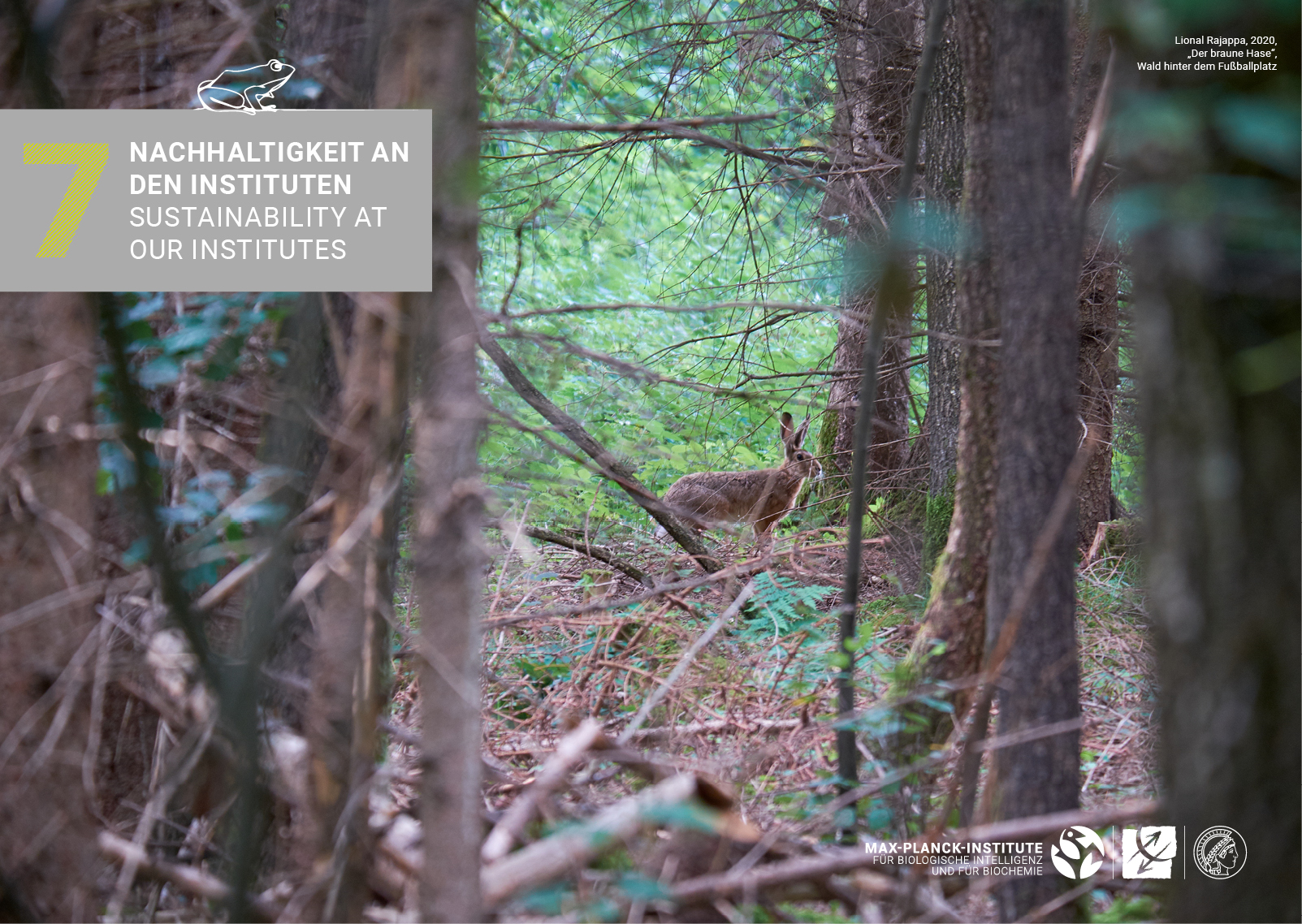
The sustainability initiative at our institutes is now a permanent feature. Its members meet regularly to discuss current issues and initiate measures. Among other things, the meadows on the institute grounds have been expanded and are mowed less frequently in order to provide habitats for wild- flowers, insects and other animals. In addition, we are also attentive to topics such as waste separation & reduction, mobility, and energy- saving methods. We constantly place efforts to be more sustainable as part of different projects.
8
PROMOTION OF YOUNG TALENT
8
8
Nachwuchs-förderung
Promotion of young Talent
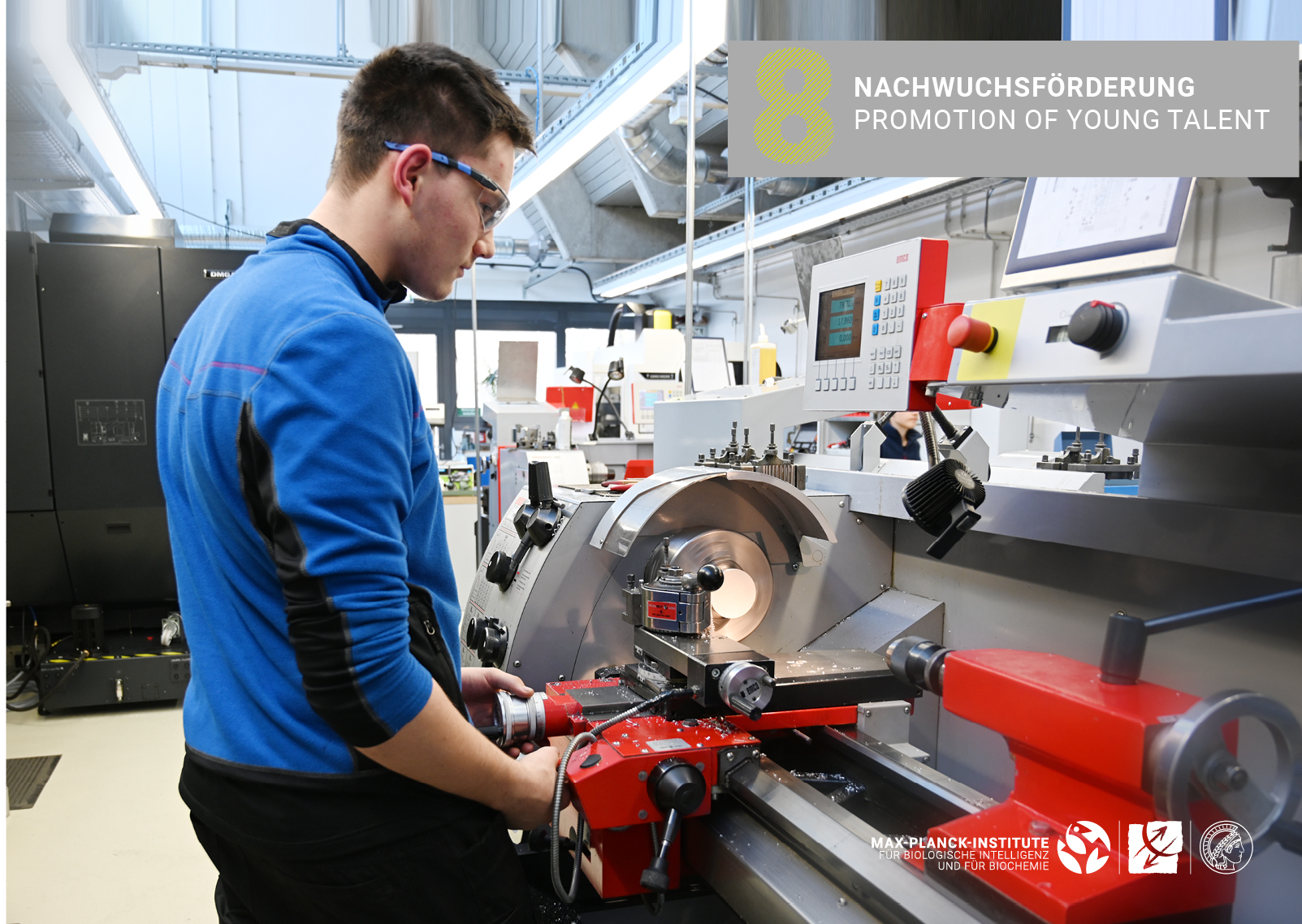
Open-minded and motivated young people are essen- tial for successful research. Many students and docto- ral candidates come to our institutes for their theses or dissertations. As in research, young talents are very im- portant in the service groups. Therefore, we provide vocational training in scientific, technical and administra- tive areas at our institutes.
For more information and career opportunities, please visit www.biochem.mpg.de/career
and www.bi.mpg.de/career
9
THE BUSY HANDS BEHIND THE SCENES
9
9
Die fleissigen Hände im Hintergrund
The busy hands behind the scenes
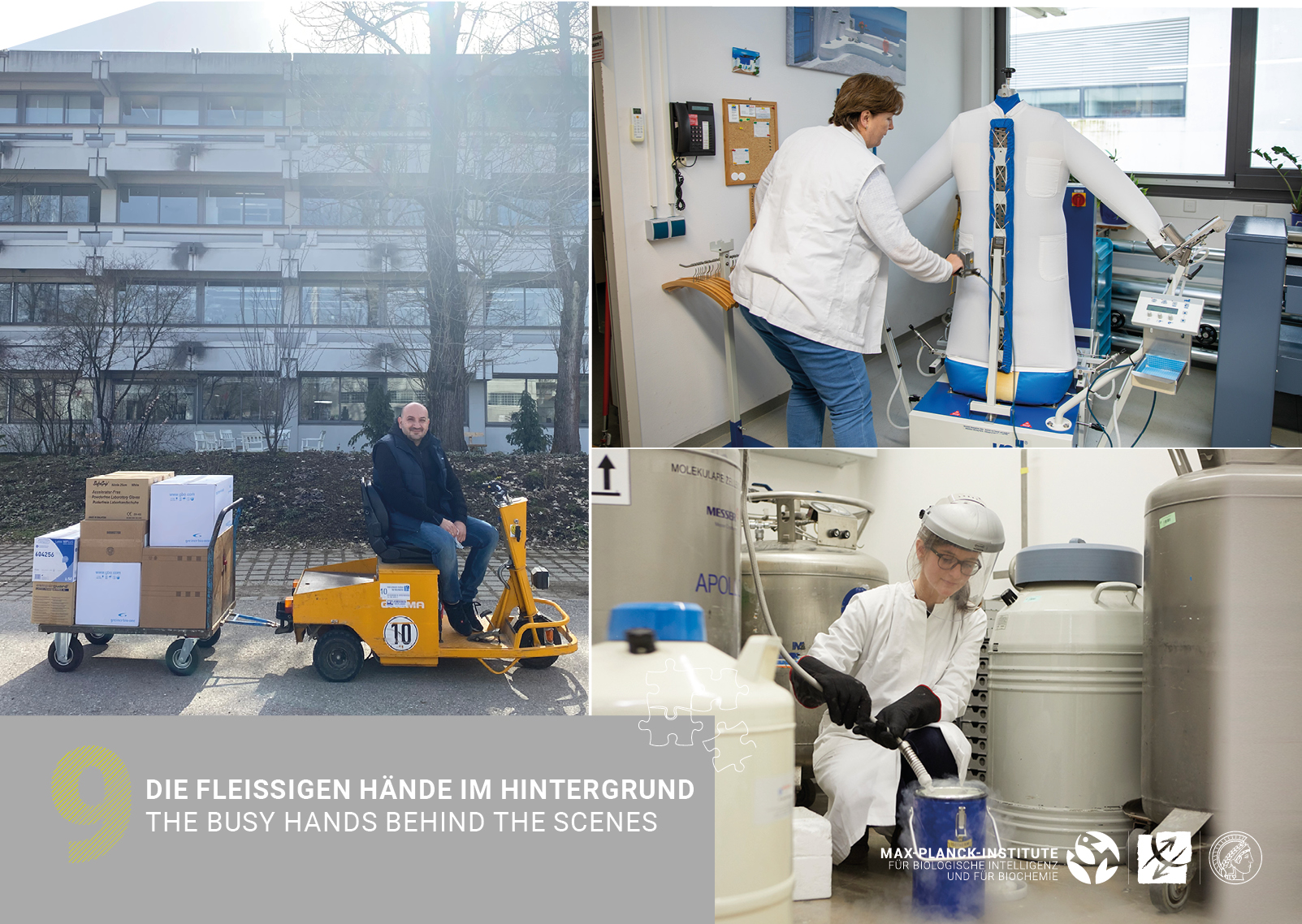
In front of you, you see the building of our goods inwards department, technical ser- vices, and workshops. We regularly use our workshops to build equipment and devices that are not commercially available. This allows us to do research at the frontiers of knowledge and existing technology. These and other service facilities, including the ad- ministration, constitute the basic logistical framework needed for the scientific research performed at our institute.
Have you also discovered the facility in the front? Liquid nitrogen is stored at up to -320,8 °F here. We use it to preserve biological samples.
10
COMPUTING POWER FOR RESEARCH
10
10
Supercomputer für die Forschung
Computing Power for Research
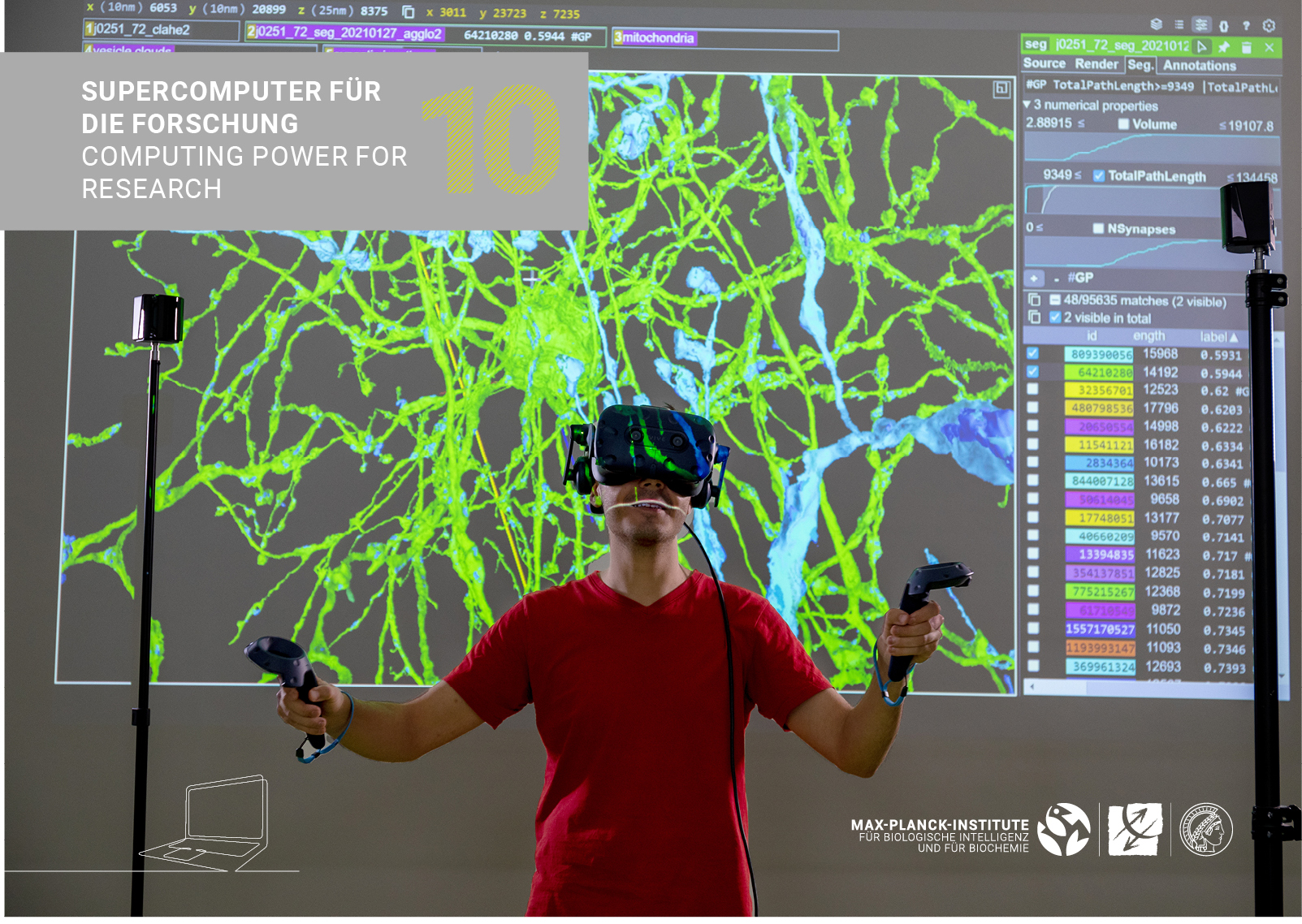
Every scientific experiment generates new data that must be stored and analyzed. For example, molecular structures with atomic details, high-resolution microscopy images and three- dimensional scans of entire brains require enormous compu- ting power and storage capacities.
High-performance computing is essential for analyzing and storing research results, and will remain an important tool in the future. As the demand will continue to increase in the next years, the Max Planck Computing and Data Facility is building a state-of-the-art scientific computing facility on the open area near the bend of the road.
11
RESEARCH FIELD: BIOLOGICAL INTELLIGENCE
11
11
Forschungsfeld: Biologische Intelligenz
Biological Intelligence

A vast network of countless cells is behind every sensory per- ception and every behavior. We investigate how different cell types develop and cooperate in neuronal circuits, how sensory input reaches the brain, and how information is processed. Among other things, a better understanding of the brain will help us understand how complex behavior patterns emerge, and are modulated by social interactions and environmental influences. This will have a profound impact on our under- standing of the diverse ecological and social adaptations involved in sustaining life.
12
HIGH-TECH IN THE LAB AND IN THE FIELD
12
12
High-Tech in Labor und Freiland
High-Tech in the Lab & in the Field
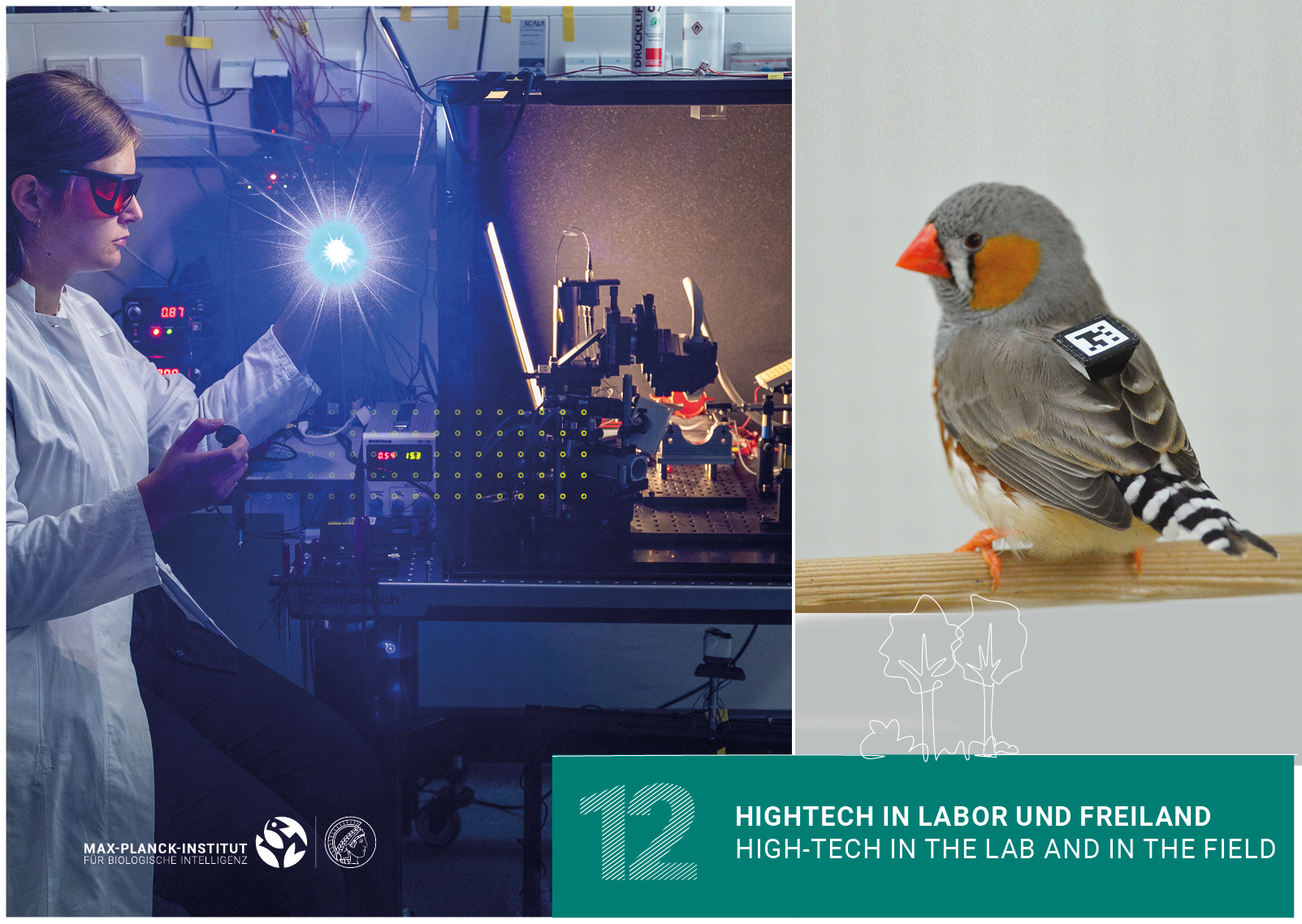
Innovations – such as novel microscopes or machine learning – allow us to understand the nervous system better, down to the level of individual cells and synap- ses. However, if we take a step back and look at the function of the brain as a whole and interacting with its surrounding, great mysteries remain to be solved. Our research therefore increasingly studies animals in their natural environment. Here, too, the latest met- hods and devices, such as miniaturized radio trans- mitters developed and built at the institute, help us to understand better the workings of animal brains and the fundamentals of biological intelligence.
13
WHAT DOES THE FUTURE HOLD FOR US?
WHAT DOES THE FUTURE HOLD FOR US?
13
13
Was hält die Zukunft für uns bereit?
What does the future hold for us?
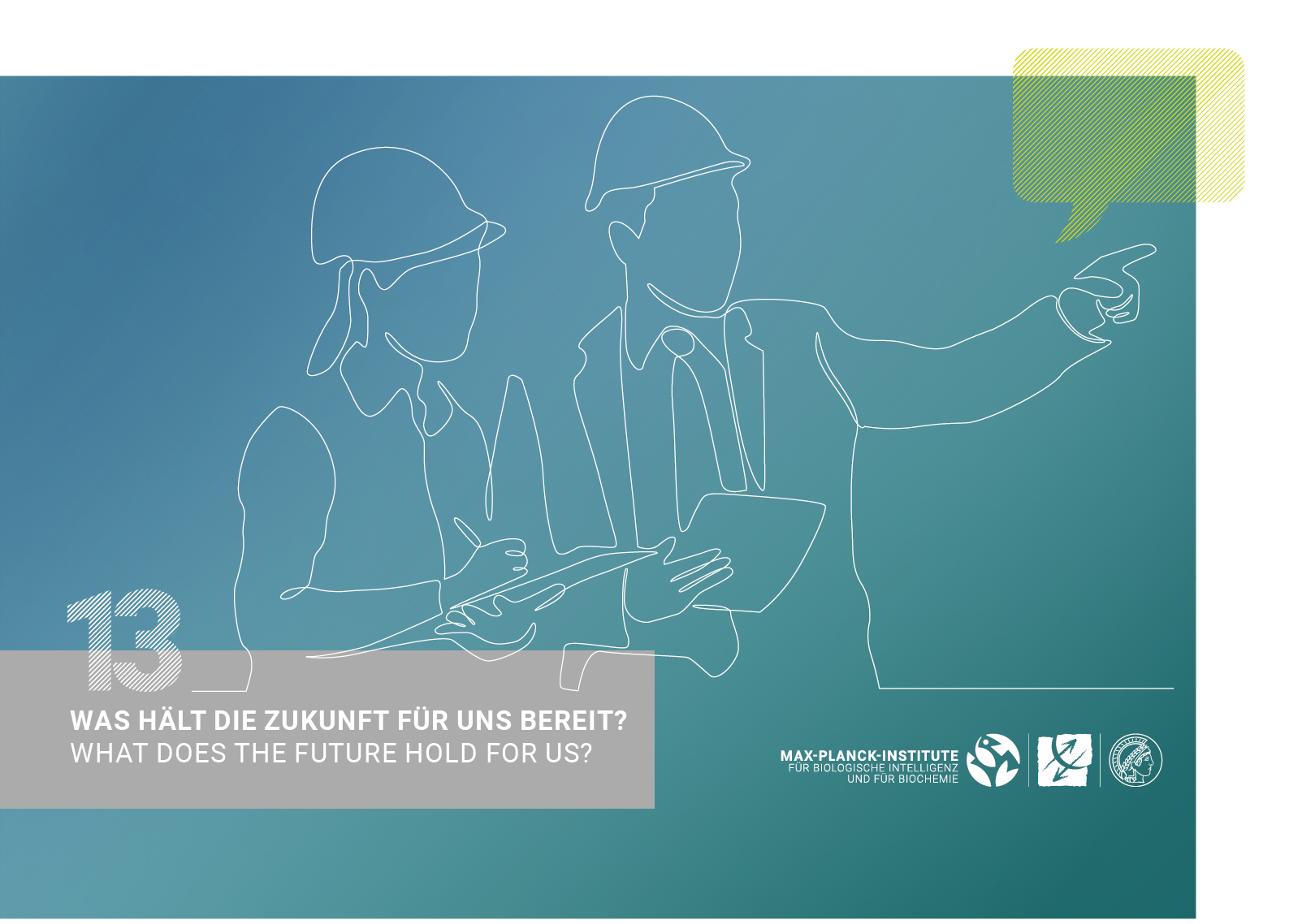
There is vacant land on the other side of the street. This also belongs to the Max Planck Society. The Max Planck Campus will be modernized on this site over the next few decades. The new research buildings will enable us to remain at the forefront of international research in the future. The new campus is intended to further advance basic research as the engine for innovation.
According to Max Planck‘s quote,
“Knowledge must precede application”
findings in basic research can form the basis for later applications. We are excited about what the future holds for us – are you?
